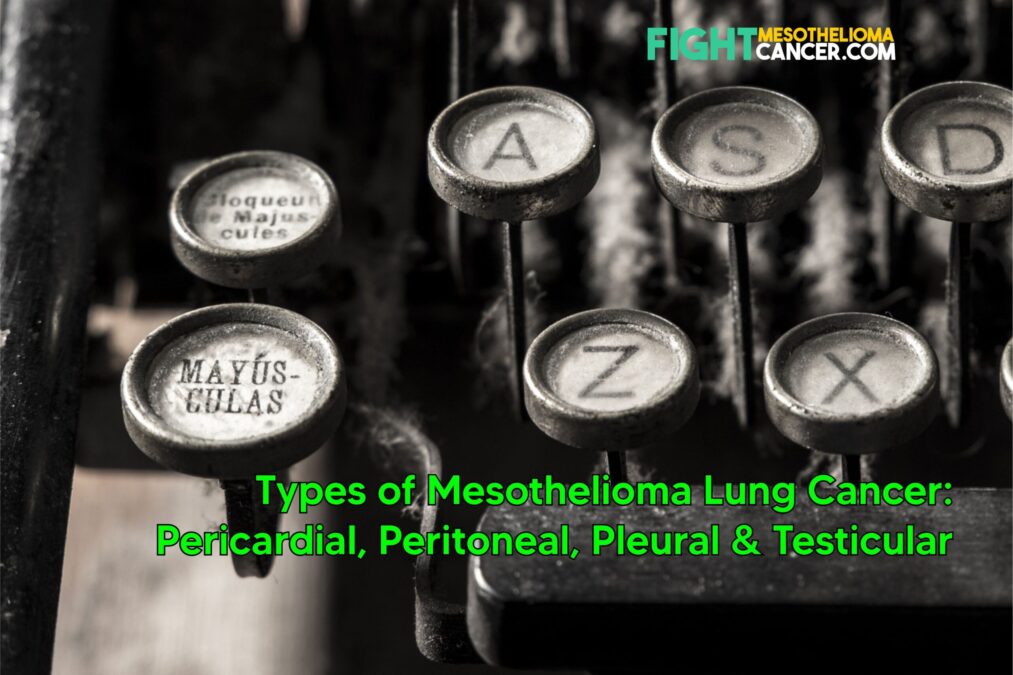This article will explain about the types of mesothelioma lung cancer. Here are 4 types of mesothelioma:
1. Pericardial Mesothelioma
Pericardial mesothelioma is a cancer that damages the linings of the heart (pericardium). The pericardium is a membrane consisting of mesothelial cells that surround the heart and provide protection to it.
The pericardium is made up of 2 different layers; 1) an outer layer called parietal layer and 2) inner layer called visceral layer.
The parietal layer lines the entire chest cavity while the visceral layer lines the heart. Pericardial mesothelioma occurs when the patient develops cancerous tissues around the linings that surround the heart, and thus around the Pericardium.
Why is the pericardium so important to the body? This is because it acts as a fluid filled ‘sac’ that insulates and protects the heart from malignant tumors.
This also keeps the heart intact within the chest cavity and prevents the heart from over expanding when blood flow in the bloodstream increases.
The space between the parietal layer & the visceral layer, known as the pericardium produces fluid designed to keep the whole area lubricated and to lessen friction between the membranes, thus allowing them to slide and glide against each other and pumping blood into the body.
2. Peritoneal Mesothelioma
Peritoneal Mesothelioma is a malignant cancer that is much rarer than Pleural mesothelioma. About 100 – 500 cases are diagnosed in the USA each year, which is about 25% – 30% of all mesothelioma cases.
Results of diagnosis are approximately 54.7% in male versus 45.3% in females, with an average age of 65 – 69 (Source: SEER – Surveillance, Epidemiology, and End Results).
Symptoms for Peritoneal mesothelioma surface to life 20 – 30 years after Asbestos exposure, as opposed to Pleural mesothelioma where symptoms surface to life after 30 – 40 years.
Peritoneal mesothelioma attacks the abdominal lining or Peritoneum of the lungs, and thus is also known as abdominal mesothelioma.
The peritoneum insulates organs of the abdomen and its primary purpose is for protection. The image on the left is of the peritoneum consisting of 2 parts; visceral and parietal peritoneum.
The function of the visceral peritoneum is to cover internal abdominal organs and it makes up most of the outer layer of the intestinal tract. The parietal peritoneum (outer layer) on the other hand insulates the abdominal cavity and is attached to the abdominal wall.
The space between these two layers is known as the peritoneal cavity, filled with a 50ml serous fluid that allows the 2 layers to freely slide and glide over each other. Another purpose for the serous fluid is to help the intestines move food freely throughout the body.
Cancerous cells force the peritoneal cavity to overproduce the serous fluid causing an excessive buildup of fluids in the abdominal cavity. This is also known as ascites.
3. Pleural Mesothelioma
About 2000 – 4000 Americans are diagnosed with Malignant Mesothelioma each year, and about 66% of those cases are of Pleural Mesothelioma.
Pleural Mesothelioma occurs when Cancer hits the lining of the lungs, also known as the ‘Pleura.’ The Pleura is a Sac which houses the lungs, and consists of a thin membrane called the ‘mesothelium.’
The mesothelium is a vital part of the lungs because it enables them to expand and contract when breathing by secreting a fluid. This fluid is located in the lungs and inside of the rib cage.
If the Pleura or the Pleural fluid becomes damaged with Cancer, it makes it very hard for the patient to breathe, thus shortness of breath is a common symptom of Pleural mesothelioma.
Types of Pleural Mesothelioma
a. Benign Pleural Mesothelioma
A Benign pleural mesothelioma is NON-Cancerous, meaning it has not spread to other parts of the body. It the masses of tumor are large, it may squeeze the lungs making it hard for the patient to breathe & cause pain.
b. Malignant Pleural Mesothelioma
Malignant Pleural Mesothelioma is cancerous and can spread to other organs of the body. It commonly resides in the pleural sac lining of the lungs and is caused by exposure to Asbestos. More on malignant pleural mesothelioma follows below.
4. Testicular Mesothelioma
Testicular mesothelioma is when malignant tumors invade the tunica vaginalis; a membranous lining that surrounds, protects & insulates the testicles.
Since the testicles are the reproductive organs of the human body, it can be very dangerous if they are damaged by cancerous tumors.
The tunica vaginalis is composed of mesothelial cells, which are cells that line the body’s serous cavities and internal organs and provide protective, non-adhesive surfaces.
Mesothelial cells also help in transporting fluids and cells across the serous cavities. The image on the left is of the tunica vaginalis composed of 2 layers; parietal (outer) layer and visceral (inner) layer.
Testicular mesothelioma is the rarest form of mesothelioma lung cancer out there with only 100 cases diagnosed this year. Since it is extremely rare, doctors do not know exactly how it is caused.
Scientists suggest 2 possible ways how testicular mesothelioma can develop;
1) patients with testicular mesothelioma have primary tumorous cells in the peritoneal membrane, while developing secondary tumors in one or both of the testicles and 2) patients develop primary tumors in the testicles.
When testicular mesothelioma develops as a secondary tumor, it is quite possible that the source of the Cancer is a peritoneal tumor that spreads (metastasizes) to other organs and areas of the body, including the lymph nodes. Scientists still however do not know how a primary tumor can develop directly in the testicles.
dr. Thahirah









